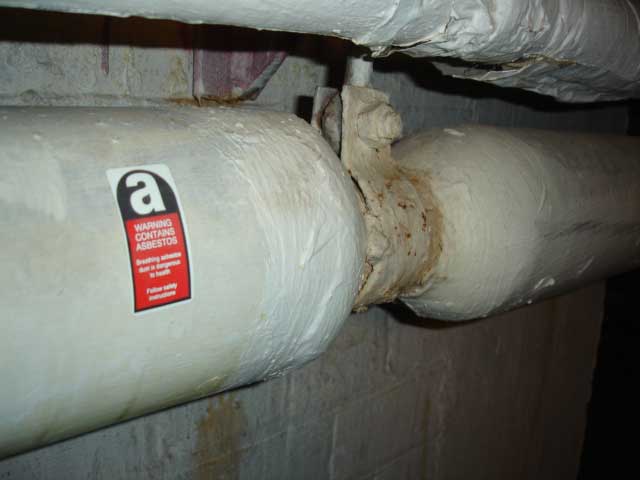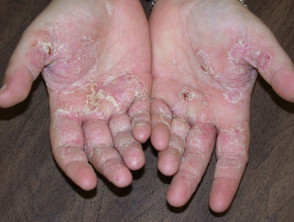You need to answer at least 34 out of 38 questions correctly to pass the Hazardous Substances Test for Operatives and Specialists. Answers may be reviewed after each question or at the end of the test. Good luck!
List of questions in above test (quick view). Click question box to reveal correct answer.
1. What is the status of asbestos use in the UK?
Give ONE answer
AB
C
D
Correct Answer: A
Explanation: The UK has banned the use of asbestos under any circumstances.
Explanation: The UK has banned the use of asbestos under any circumstances.
2. Which of the following is TRUE of asbestos?
Give ONE answer
AB
C
D
Correct Answer: C
Explanation: Asbestos remains the largest cause of occupational deaths in the UK.
Explanation: Asbestos remains the largest cause of occupational deaths in the UK.
3. Why is asbestos a threat to health?
Give ONE answer
AB
C
D
Correct Answer: C
Explanation: Inhaling asbestos fibres can cause serious lung disease.
Explanation: Inhaling asbestos fibres can cause serious lung disease.
4. What are TWO major complications that can result from inhaling asbestos fibres?
Give ONE answer
AB
C
D
Correct Answer: C
Explanation: Asbestos fibres can cause lung scarring, and cancer in the lungs, abdominal cavity, and heart.
Explanation: Asbestos fibres can cause lung scarring, and cancer in the lungs, abdominal cavity, and heart.
5. How can the presence of asbestos be verified?
Give ONE answer
AB
C
D
Correct Answer: B
Explanation: Asbestos can only be detected through laboratory analysis.
Explanation: Asbestos can only be detected through laboratory analysis.
6. Asbestos most commonly comes in three types. What types are these?
Give ONE answer
AB
C
D
Correct Answer: A
Explanation: The three key asbestos types are blue (crocidolite), brown (amosite), and white (chrysolite).
Explanation: The three key asbestos types are blue (crocidolite), brown (amosite), and white (chrysolite).
7. Asbestos was commonly used in building materials around which period?
Give ONE answer
AB
C
D
Correct Answer: C
Explanation: Between 1940 and 1980, over 5,000 products are estimated to have been produced containing asbestos.
Explanation: Between 1940 and 1980, over 5,000 products are estimated to have been produced containing asbestos.
8. Asbestos, and materials containing it, were commonly found in which of the following?
Give ONE answer
AB
C
D
Correct Answer: A
Explanation: Asbestos was widely used across a range of materials and products.
Explanation: Asbestos was widely used across a range of materials and products.
9. Any building constructed before which date must legally be subjected to an appropriate survey?
Give ONE answer
AB
C
D
Correct Answer: C
Explanation: The law requires that any building built before 2000 be subjected to a survey. You must treat it as if it may contain asbestos.
Explanation: The law requires that any building built before 2000 be subjected to a survey. You must treat it as if it may contain asbestos.
10. You are working on a building constructed in 1997 which has been cleared as asbestos-free. How should you proceed?
Give ONE answer
AB
C
D
Correct Answer: A
Explanation: Always assume asbestos may still be present - no survey can provide absolute certainty.
Explanation: Always assume asbestos may still be present - no survey can provide absolute certainty.
11. Your colleague thinks they may have uncovered asbestos in a ceiling - what should you do?
Give ONE answer
AB
C
D
Correct Answer: D
Explanation: You must stop work straight away, warn your supervisor, and make sure nobody else approaches the area.
Explanation: You must stop work straight away, warn your supervisor, and make sure nobody else approaches the area.
12. Which of the two types of asbestos survey is most comprehensive?
Give ONE answer
AB
C
Correct Answer: C
Explanation: Refurbishment / demolition surveys are more comprehensive.
Explanation: Refurbishment / demolition surveys are more comprehensive.
13. A material has been sent to the laboratory for asbestos testing. What should be done in the meantime?
Give ONE answer
AB
C
D
Correct Answer: D
Explanation: If the laboratory report is not yet completed, assume the material contains asbestos.
Explanation: If the laboratory report is not yet completed, assume the material contains asbestos.
14. You are to begin demolition in a building that is thought to contain asbestos. What should happen?
Give ONE answer
AB
C
D
Correct Answer: D
Explanation: All workers who may be exposed to asbestos must complete an appropriate awareness course.
Explanation: All workers who may be exposed to asbestos must complete an appropriate awareness course.
15. What is required for a job involving work with asbestos?
Give TWO answers
AB
C
D
Correct Answer: C, D
Explanation: Training and a risk assessment in writing are crucial components for a safe job.
Explanation: Training and a risk assessment in writing are crucial components for a safe job.
16. Who is permitted to remove materials that run a high risk of containing asbestos?
Give ONE answer
AB
C
D
Correct Answer: C
Explanation: High risk materials can only be removed by a licensed contractor.
Explanation: High risk materials can only be removed by a licensed contractor.
17. What are two things you must ensure when working with asbestos?
Give TWO answers
AB
C
D
E
Correct Answer: B, E
Explanation: You must follow the correct on-site safety procedures regarding PPE and personal care.
Explanation: You must follow the correct on-site safety procedures regarding PPE and personal care.
18. Which of the following is a hazardous substance?
Check ALL that apply
AB
C
D
Correct Answer: B, C, D
Explanation: A hazardous substance is anything (solid, liquid, or gas) that can cause harm to you or the environment.
Explanation: A hazardous substance is anything (solid, liquid, or gas) that can cause harm to you or the environment.
19. Which of the following is TRUE about the health risks posed by hazardous substances?
Give ONE answer
AB
C
D
Correct Answer: C
Explanation: Health risks posed by hazardous substances may only begin to show over time. Damage cannot always be treated, and it is not uncommon.
Explanation: Health risks posed by hazardous substances may only begin to show over time. Damage cannot always be treated, and it is not uncommon.
20. Dermatitis is a condition that is most likely to develop from exposure to what?
Give ONE answer
AB
C
D
Correct Answer: D
Explanation: Wet cement is a skin sensitiser, and can cause dermatitis.
Explanation: Wet cement is a skin sensitiser, and can cause dermatitis.
21. When does lead pose a particularly high risk?
Give ONE answer
AB
C
D
Correct Answer: D
Explanation: Ingesting lead is highly dangerous.
Explanation: Ingesting lead is highly dangerous.
22. Wellington boots are a safe way of protecting your skin from burns. This applies to which activity?
Give ONE answer
AB
C
D
Correct Answer: A
Explanation: Wet concrete can cause skin burns, and boots offer good protection.
Explanation: Wet concrete can cause skin burns, and boots offer good protection.
23. Which regulations specifically cover your employer's legal obligations to you regarding hazardous substances?
Give ONE answer
AB
C
D
Correct Answer: A
Explanation: Control of Substances Hazardous to Health (COSHH) regulations cover your employer's legal obligations.
Explanation: Control of Substances Hazardous to Health (COSHH) regulations cover your employer's legal obligations.
24. How are hazardous substances assessed?
Give ONE answer
AB
C
D
Correct Answer: D
Explanation: Hazardous substances can be produced as a by-product of work, and all risks should be assessed through a COSHH assessment.
Explanation: Hazardous substances can be produced as a by-product of work, and all risks should be assessed through a COSHH assessment.
25. Whilst sanding down wood you begin to feel ill. What should you do?
Give ONE answer
AB
C
D
Correct Answer: C
Explanation: You should stop work and report symptoms to your supervisor if you begin to feel ill whilst working with hazardous substances.
Explanation: You should stop work and report symptoms to your supervisor if you begin to feel ill whilst working with hazardous substances.
26. Why must you not smoke without thoroughly cleaning your hands?
Give ONE answer
AB
C
D
Correct Answer: C
Explanation: You may unwittingly ingest hazardous substances.
Explanation: You may unwittingly ingest hazardous substances.
27. What is one thing you should be aware of when using a water jet around hazardous substances?
Give ONE answer
AB
C
D
Correct Answer: A
Explanation: The high pressure may force hazardous substances into your body.
Explanation: The high pressure may force hazardous substances into your body.
28. Your employer requests that you begin health surveillance. What does this mean?
Give ONE answer
AB
C
D
Correct Answer: B
Explanation: You are legally obliged to cooperate with health surveillance so that safety precautions can be monitored.
Explanation: You are legally obliged to cooperate with health surveillance so that safety precautions can be monitored.
29. Which of the following is TRUE about hazardous substance pictograms?
Give ONE answer
AB
C
D
Correct Answer: D
Explanation: Pictograms are the same worldwide.
Explanation: Pictograms are the same worldwide.
30. What does this sticker mean?
Give ONE answer

B
C
D
Correct Answer: B
Explanation: Materials with this sticker contain asbestos.
Explanation: Materials with this sticker contain asbestos.
31. You come across a clear, strong-smelling substance in an unlabelled container. What do you do?
Give ONE answer
AB
C
D
Correct Answer: B
Explanation: An unlabelled substance should be reported, and nobody should come into contact with it.
Explanation: An unlabelled substance should be reported, and nobody should come into contact with it.
32. What activity is MOST likely to cause the condition in this picture?
Give ONE answer

B
C
D
Correct Answer: C
Explanation: Dermatitis is most likely, among these, to be caused by working with wet cement.
Explanation: Dermatitis is most likely, among these, to be caused by working with wet cement.
33. You have a half-finished container of a hazardous substance, and no clear procedure has been defined for disposing of it. What should you do?
Give ONE answer
AB
C
D
Correct Answer: A
Explanation: All hazardous substances must be disposed of according to on-site procedure.
Explanation: All hazardous substances must be disposed of according to on-site procedure.
34. What does HFL stand for?
Give ONE answer
AB
C
D
Correct Answer: C
Explanation: HFLs are highly flammable liquids.
Explanation: HFLs are highly flammable liquids.
35. Which fire extinguisher should be used when conducting hot works?
Give ONE answer
AB
C
D
Correct Answer: C
Explanation: You must be issued with an extinguisher specific to your task and area.
Explanation: You must be issued with an extinguisher specific to your task and area.
36. What may indicate an LPG leak?
Give ONE answer
AB
C
D
Correct Answer: A
Explanation: You may notice an LPG leak through its particular smell.
Explanation: You may notice an LPG leak through its particular smell.
37. Your exposure to hazardous substances must be controlled, or where possible prevented entirely. Who is responsible for ensuring this?
Give ONE answer
AB
C
D
Correct Answer: D
Explanation: Your employer is legally responsible for this.
Explanation: Your employer is legally responsible for this.
38. What is notable about this pipe cladding?
Give ONE answer
AB
C
D
Correct Answer: A
Explanation: This cladding is likely to contain asbestos.
Explanation: This cladding is likely to contain asbestos.
